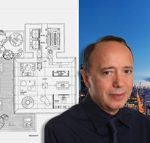Trending
Owners’ chance for emissions cap break is over
Application window closed June 30

The window for certain property owners to apply for a break from the city’s emission caps has closed.
Owners had until June 30 to apply for a temporary adjustment to emission limits set by Local Law 97. Under the measure, buildings larger than 25,000 square feet must start meeting new greenhouse-gas emission levels in 2024. The rules are intended to help the city meet its goal of cutting emissions 40 percent by 2030 and 80 percent by 2050.
An adjustment to the new requirements was available, but not limited, to buildings with 24-hour operations, high-density occupancy or energy-intensive industrial uses or communications technologies.
Owners had to show that meeting 2024 caps was impossible because their building’s emissions in 2018 already exceeded those goals by more than 40 percent. Those who are approved will have their building’s emission limits lowered to 70 percent of their 2018 emission levels.
The break lasts from 2024 to 2029. Owners who applied were also required to submit a plan for how they will eventually bring their buildings into compliance.
The Department of Buildings opened applications for the adjustments on April 12. Hospitals and other nonprofit health care facilities have until July to apply for the reprieve.
A representative for the Department of Buildings said the agency has received more than 80 applications.
Many in the real estate industry have called for changes to the law, saying it penalizes high-density buildings without taking energy efficiency into account. Critics have also pointed out that fines for exceeding emission caps — which can run into the millions of dollars per year for a single building — will go into the city’s general fund, rather than toward meeting environmental goals.




